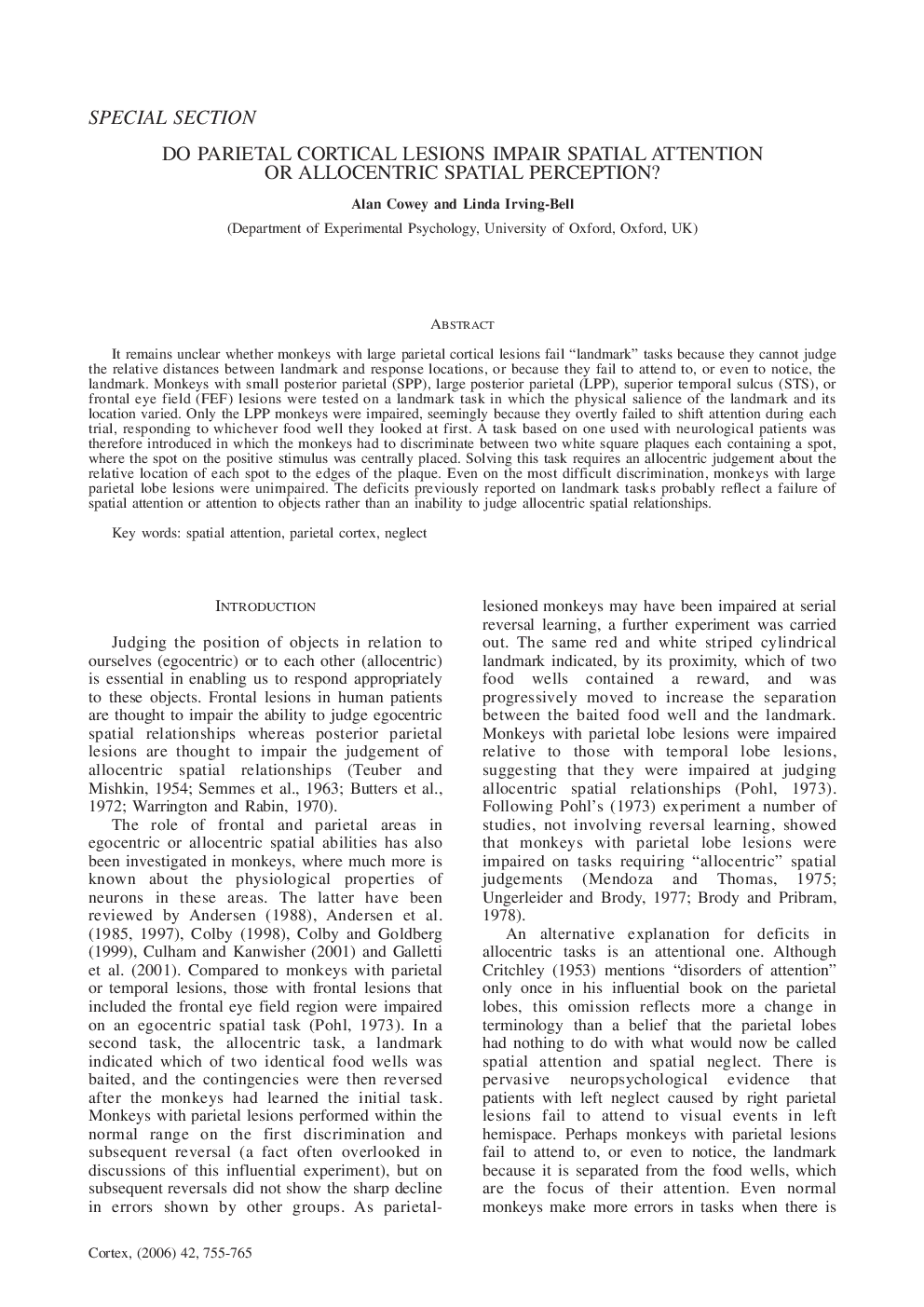| Article ID | Journal | Published Year | Pages | File Type |
|---|---|---|---|---|
| 942755 | Cortex | 2006 | 11 Pages |
It remains unclear whether monkeys with large parietal cortical lesions fail “landmark” tasks because they cannot judge the relative distances between landmark and response locations, or because they fail to attend to, or even to notice, the landmark. Monkeys with small posterior parietal (SPP), large posterior parietal (LPP), superior temporal sulcus (STS), or frontal eye field (FEF) lesions were tested on a landmark task in which the physical salience of the landmark and its location varied. Only the LPP monkeys were impaired, seemingly because they overtly failed to shift attention during each trial, responding to whichever food well they looked at first. A task based on one used with neurological patients was therefore introduced in which the monkeys had to discriminate between two white square plaques each containing a spot, where the spot on the positive stimulus was centrally placed. Solving this task requires an allocentric judgement about the relative location of each spot to the edges of the plaque. Even on the most difficult discrimination, monkeys with large parietal lobe lesions were unimpaired. The deficits previously reported on landmark tasks probably reflect a failure of spatial attention or attention to objects rather than an inability to judge allocentric spatial relationships.
